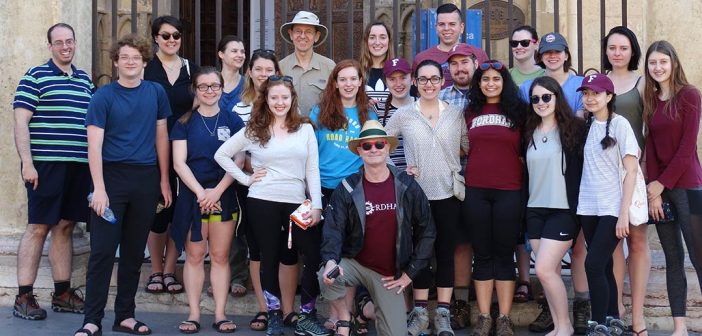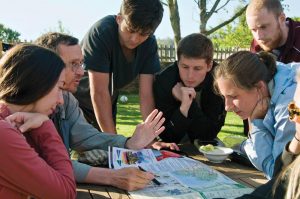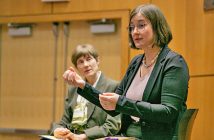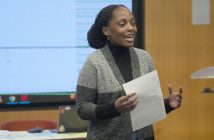The Camino de Santiago is a 500-mile pilgrimage route that begins in western France and ends in northern Spain at the cathedral of Santiago de Compostela, the legendary burial site of St. James.
In 2007, after having walked the route several times, Richard Gyug, Ph.D., professor of history and medieval studies, decided to turn the pilgrimage experience itself into a means of study. He created a course titled Study Tour: Medieval Spain, which is offered through the Center for Medieval Studies.
Now, after 23 years of service to Fordham, Gyug is retiring, but not before his seventh and final pilgrimage with Fordham students along the Camino.
Having set out from Leon, Spain, on May 26, the group will walk the last 200 miles of the route, which has been traversed by pilgrims since the 10th century. Trekking around 15 miles a day, they will reach Santiago on June 8.
In using the Camino as a living classroom, Gyug has been motivated by questions about the medieval experience.
“In doing something that people have done for a thousand years, do we understand the people of that time better?” he asked. “How much does the actual physical activity create in us a similar response?”
Stripped Down to the Essentials
The Camino is both a historical and modern phenomenon, said Gyug. For his students, it can be a rite of passage out of their daily routine, where life is stripped down to the essentials one can fit into a backpack.
“The students step across a threshold into a world with different rules. They walk for two weeks in a community, and then they make a transition back to the next stage of their lives,” he said.
As part of their journey, the students work in teams to examine different thematic topics, for instance, studying spirituality along the route, the infrastructure of the Camino itself, flora and fauna, or vernacular architecture.
They also write daily entries on the Fordham Camino blog to record their reflections on what they observe.
Over the years, Gyug has had many memorable experiences, from the elation of arriving in Santiago, to the more challenging moments of the demanding journey.
“For me it’s always a pleasure to see the student’s growth and development,” he said. “But it’s bittersweet, too, because some of them struggle.
Out of this struggle, however, Gyug has observed students make important insights about themselves and about life, often expressed in the reflections they submit afterwards.
“I remember one student writing that she couldn’t impose her will on the Camino. She’s not going to be able to shape it—it shaped her. That was very striking,” he said.
For Gyug, the emphasis on reflection that the Camino course offers fits well with Fordham’s mission and Ignatian tradition.
“The students are thinking about community within the group of students, and with others walking. It deepens self-awareness and awareness of others,” he said.
Though this is the last trip Gyug will take with students, he said he will definitely walk the Camino again. At Fordham, David Myers, Ph.D., professor of history, who has taught the class the last two years and is co-teaching it with Gyug this year, will continue the Study Tour in future years.
–Nina Heidig




